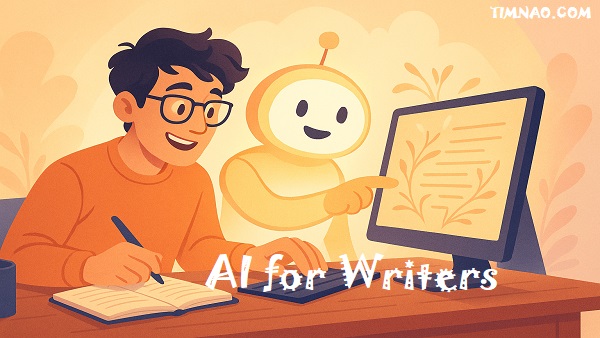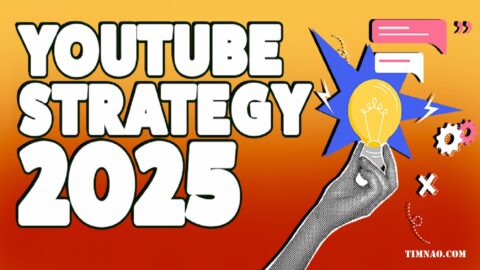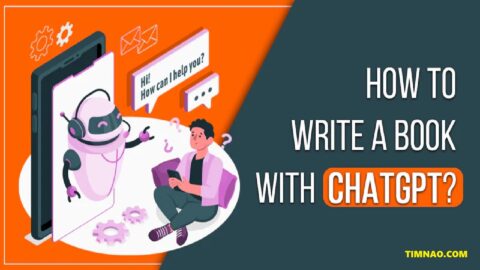Unleash Your Ultimate Writing Potential: A Beginner’s Guide to AI for Writers ✍️
If you’re a writer, you’ve likely heard the buzz—or maybe even the alarm bells—about Artificial Intelligence. The world of AI for writers is no longer a futuristic concept; it’s a present-day reality that is revolutionizing how we create, edit, and monetize content. Whether you’re a blogger, a budding novelist, a freelance marketer, or just someone who loves to write, understanding how to partner with AI can be the single most powerful step you take in your career.
This guide is designed for beginners who are curious but perhaps a little intimidated. We’ll demystify the technology, show you how to get started, and reveal how you can use these incredible tools to not only improve your craft but also boost your income. Forget the idea of robots taking over; it’s time to see AI as your new, tireless creative partner.
Table of Contents
- What is AI for Writers and Why is Everyone Talking About It? 🤔
- Your First Steps into AI Content Creation 🚀
- The Secret Sauce: How to ‘Talk’ to AI (Prompting 101) 🗣️
- Supercharge Your Writing Workflow with AI ⚡
- From Words to Wealth: How to Monetize AI Writing 💰
- Playing it Safe: Ethics and Originality in the AI Era 🛡️
- The Future is Now: Staying Ahead in the World of AI 🔮
What is AI for Writers and Why is Everyone Talking About It? 🤔
Let’s start by clearing up a common misconception. When we talk about AI for writers, we’re not talking about a machine that will replace your unique creativity, voice, and passion. Instead, think of AI as an incredibly smart and versatile assistant. These tools are computer programs trained on vast amounts of text from the internet, enabling them to understand and generate human-like language.
At its heart, AI content creation is about collaboration. You provide the ideas, the direction, and the emotional core, while the AI handles the heavy lifting. This can include brainstorming topics when you’re stuck, conducting research in seconds, drafting an outline for a complex article, or even polishing your grammar and style to perfection. It’s about augmenting your abilities, not automating your soul.
The reason for all the excitement is simple: efficiency and empowerment. The traditional writing process is often slow and filled with friction. Writer’s block, tedious research, and endless revisions can drain your creative energy. AI tools step in to streamline these stages, freeing you to focus on what you do best: weaving compelling narratives and connecting with your audience. This partnership allows you to produce higher-quality content, faster than ever before.
Your First Steps into AI Content Creation 🚀
Dipping your toes into the world of AI can feel overwhelming with so many tools available. However, they generally fall into a few key categories, each serving a different stage of the writing process. Understanding these types will help you build a powerful and efficient workflow.
First up are the Content Generators. These are the tools you hear about most often, like OpenAI’s ChatGPT or Jasper. You give them a prompt (an instruction or question), and they generate text—from a single sentence to a full article. For a beginner, these are fantastic for getting past the fear of the blank page. They can provide a first draft, brainstorm a list of blog titles, or write a product description, giving you a solid foundation to edit and personalize.
Next, you have AI-Powered Editing and Proofreading Tools. Think of these as your grammar checker on steroids. Tools like Grammarly use AI not just to catch typos and grammatical errors but also to suggest improvements in clarity, tone, and style. They can help you rephrase awkward sentences and ensure your writing is confident and clear. For any writer, this is an indispensable safety net that polishes your work to a professional standard.
Finally, there are Specialized AI Tools. Some platforms are designed for specific tasks, like generating high-converting sales copy or optimizing your content for search engines (SEO). These tools analyze market data and successful formulas to help you craft messages that are not only well-written but also effective. As you grow, exploring these specialized tools can give you a significant edge in the market.
The Secret Sauce: How to ‘Talk’ to AI (Prompting 101) 🗣️
The single most important skill in the world of AI for writers is “prompt engineering.” This is simply the art of giving the AI clear, effective instructions. A vague prompt leads to a vague answer. A detailed, well-crafted prompt leads to a tailored, high-quality response. Mastering this is the key to unlocking AI’s true potential.
Here are the fundamental principles of crafting a great prompt:
Be Specific and Clear
An AI model is not a mind reader. You need to be explicit about what you want. Don’t just say, “Write about dogs.” Instead, try: “Write a 500-word blog post for new dog owners about the top 5 most important commands to teach a puppy. The tone should be friendly, helpful, and encouraging.” That single prompt provides the topic, format, length, target audience, and tone, giving the AI a precise roadmap.
Provide Context
The more context the AI has, the better its response will be. If you’re writing marketing copy, give it background on the product and the target customer’s pain points. For example: “You are a marketing expert. Write three social media ads for ‘EcoGlow,’ a new vegan skincare line. The target audience is environmentally-conscious millennials aged 25-35. Highlight the product’s cruelty-free ingredients and sustainable packaging.”
Define the Voice and Tone
Content needs to resonate emotionally, and that comes down to voice and tone. Do you want your writing to be professional, witty, empathetic, or urgent? State it directly in your prompt. You can even ask the AI to emulate a certain style. For instance, “Explain the concept of blockchain in the style of a patient, knowledgeable high school teacher.” This helps the AI adopt a persona, making the content feel more authentic.
Avoid Common Mistakes
Beginners often make a few common prompting errors. One is asking too many questions at once, which can confuse the AI. Break complex requests into smaller, sequential prompts. Another mistake is being too ambiguous. Words like “good” or “interesting” are subjective. Instead, define what “good” means—is it engaging, persuasive, or informative? The more you eliminate guesswork, the better your results.
Supercharge Your Writing Workflow with AI ⚡
Now that you understand the basics, let’s look at how to integrate AI into your daily writing process to create a streamlined and highly productive workflow. You can think of it as a four-stage journey from idea to polished final product.
Stage 1: Brainstorming and Research on Autopilot
Every great piece of content starts with an idea. But what happens when you’re feeling uninspired? This is where AI becomes your ultimate brainstorming partner. You can ask it to generate blog post ideas for a specific niche, suggest unique angles for a common topic, or even create a list of compelling headlines.
AI tools are also research powerhouses. Instead of spending hours sifting through articles, you can ask an AI to summarize key points on a topic, find relevant statistics, or even analyze competitor content. This automated research phase provides you with a wealth of information in minutes, giving you a strong foundation to build upon.
Stage 2: Outlining and Structuring with Ease
A solid structure is the backbone of clear and engaging writing. Before you write a single paragraph, use AI to create a logical outline. Feed it your main topic and key points, and it can generate a well-organized structure with headings and subheadings.
This step is a game-changer for long-form content like eBooks or detailed guides. An AI-generated outline ensures your narrative flows logically and that you don’t miss any crucial information. You can then use this framework as your roadmap, tackling one section at a time with confidence and clarity.
Stage 3: Drafting Your Content Faster Than Ever
With your research and outline in hand, it’s time to draft. This is often the most time-consuming part of writing, but AI content creation tools can significantly speed it up. You can prompt the AI to expand on each point in your outline, generating a rough first draft in a fraction of the time it would take to write it manually.
Remember, the goal here isn’t to get a perfect, ready-to-publish piece. The AI-generated text is your “clay.” It’s a starting point that you will mold and refine. This approach frees you from the pressure of getting every word right on the first try and allows you to focus your energy on the next, most important stage.
Stage 4: Editing and Polishing with Your AI Assistant
No piece of writing is complete without a thorough edit. This is where your human expertise truly shines, and AI can act as your diligent proofreader. Use AI editing tools to catch grammatical errors, typos, and awkward phrasing. They can also offer suggestions to improve sentence structure and clarity.
This is also the stage where you infuse the draft with your unique voice. Rewrite sentences to sound more like you. Add personal anecdotes, deeper insights, and emotional nuance that only a human can provide. This collaborative editing process, blending AI’s precision with your creativity, results in a final piece that is both polished and profoundly authentic.
From Words to Wealth: How to Monetize AI Writing 💰
Using AI isn’t just about writing better or faster; it’s also about creating new opportunities to earn an income. For freelancers, the ability to monetize AI writing is one of the most exciting aspects of this technology. It allows you to scale your business, offer new services, and deliver more value to your clients.
Package Your AI-Enhanced Services
Start thinking beyond charging by the word or hour. With AI, you can produce content much more efficiently, so you can offer service packages that provide immense value. For example, instead of just offering “blog writing,” you could offer a “Monthly Content Package” that includes four AI-assisted, SEO-optimized blog posts, social media updates to promote them, and a performance report.
This shifts the focus from the time you spend to the results you deliver. Clients are often willing to pay more for a comprehensive solution that solves a bigger problem for them. Your AI-powered workflow makes it possible to deliver these packages profitably.
Develop New and Diverse Offerings
AI’s versatility allows you to expand your service menu. If you’ve primarily been a writer, you can now confidently offer services like:
- Email Marketing Campaigns: Use AI to generate entire email sequences, from welcome series to sales funnels.
- Social Media Management: Create a month’s worth of engaging social media content in just a few hours.
- Video Scripting: Quickly draft compelling scripts for YouTube videos, ads, or online courses.
- Copywriting and Ad Creation: Generate dozens of variations of headlines and ad copy for A/B testing.
Create and Sell Digital Products
One of the most powerful ways to monetize AI writing is by creating your own digital products. Since AI can help you produce long-form content so efficiently, you can create and sell assets that generate passive income.
Consider developing products like:
- eBooks: Write and publish an eBook on a topic you’re passionate about.
- Online Courses: Use AI to help you outline, script, and create materials for an online course or workshop.
- Templates and Toolkits: Design and sell prompt templates for other writers or business owners in a specific niche.
Playing it Safe: Ethics and Originality in the AI Era 🛡️
With great power comes great responsibility. As you embrace AI for writers, it’s crucial to navigate the ethical considerations with integrity. Your reputation is your most valuable asset, and protecting it means using these tools responsibly.
The Human Touch is Non-Negotiable
Never, ever pass off raw, unedited AI-generated text as your own. Not only is this unethical, but it also produces generic content that lacks a soul. The true value you bring as a writer is your unique perspective, creativity, and human experience. Always treat AI output as a first draft that requires your thoughtful editing, fact-checking, and personal touch.
Avoid Plagiarism at All Costs
AI models learn from existing internet data, which means there’s a small but real risk they might generate text that is too close to a copyrighted source. Always run your final content through a plagiarism checker to ensure its originality. This protects both you and your client from any potential legal issues.
Be Transparent with Your Clients
Honesty is the best policy. Be upfront with your clients about how you use AI in your workflow. Frame it as a tool that allows you to deliver higher-quality work more efficiently. Most clients will appreciate your innovation and transparency. This open communication builds trust and sets clear expectations from the start.
The Future is Now: Staying Ahead in the World of AI 🔮
The world of AI is evolving at a staggering pace. The tools and techniques that are cutting-edge today may be standard tomorrow. To maintain your edge as an AI-savvy creator, you must commit to a mindset of continuous learning and adaptability.
Stay curious. Follow AI news and trends, join online communities of writers using AI, and don’t be afraid to experiment with new tools and features as they emerge. The more you play and test, the more intuitive your understanding of AI’s capabilities will become.
The writers who will thrive in the coming years are not those who resist this change, but those who learn to dance with it. By building adaptability into your practice, you’re not just future-proofing your career; you’re positioning yourself as a leader in the next generation of content creation.
Your Journey Starts Now
You are now equipped with the foundational knowledge to begin your journey with AI for writers. You understand what it is, how to use it, and the incredible potential it holds for your creativity and your career. The initial learning curve may feel a bit steep, but with patience and practice, these tools will become a natural and indispensable part of your process.
Start small. Pick one AI tool and one part of your workflow to focus on. Master it, see the results, and then expand from there. Welcome to the future of writing—it’s smarter, faster, more profitable, and more exciting than ever before.









